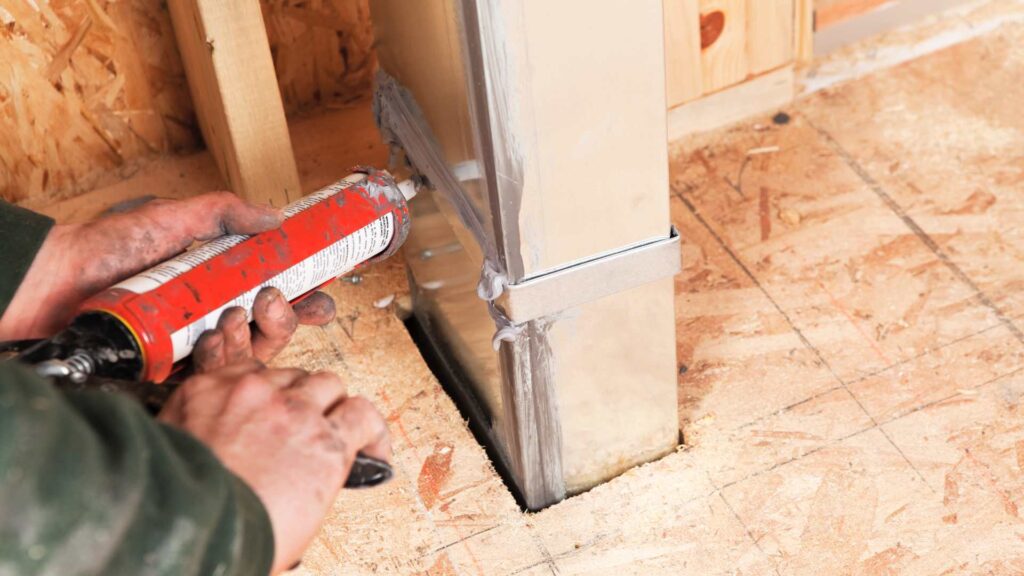Every small noise or movement in your home can set off alarm bells when mice are a possibility. These tiny invaders can cause big problems—from structural damage to health risks.
Knowing how and where they enter your home is essential for keeping them at bay.
Common Entry Points for Mice
Mice are resourceful creatures, capable of squeezing through holes as small as a dime. Understanding the most common entry points is the first step in effective prevention.
Gaps and Cracks in Walls and Foundations
Mice are experts at finding small cracks and gaps in your home’s exterior. They often enter through:
- Cracks in the foundation
- Holes in siding
- Damaged mortar or bricks
Inspect your home’s walls and foundation carefully. Even the smallest crevice can serve as a gateway for mice.
Doors and Windows
Damaged or poorly sealed doors and windows are common entry points. Look for:
- Worn or missing weatherstripping
- Loose or broken frames
- Gaps under doors without door sweeps
Ensuring a tight seal around all doors and windows can significantly reduce access points.
Rooflines and Attics
Mice often climb to higher ground to enter homes through:
- Gaps in eaves
- Attic vents without proper screening
- Loose shingles or roof intersections
Since these areas are harder to inspect, it’s worth using a flashlight to spot gaps.
Utility Openings
Pipes, cables, and HVAC systems often leave gaps that mice exploit. Check for:
- Unsealed spaces around plumbing and electrical lines
- Loose vent covers
Seal these areas with durable materials like
steel wool or caulk.
Garage and Basement Openings
Garages and basements are particularly vulnerable due to:
- Gaps under garage doors
- Poorly sealed basement windows
- Cracks in concrete floors
Regular maintenance and sealing can keep these areas secure.
Why Mice Target Certain Entry Points

Mice are drawn to areas that provide warmth, food, and safety. Entry points near kitchens, basements, or attics—all cozy spaces—are particularly appealing.
Seasonal changes, especially in fall and winter, drive mice to seek shelter indoors. In colder months, they seek warmth and a consistent food source, which makes homes an ideal destination.
Kitchens, specially
under the dishwasher, provide easy access to food crumbs and pantry items, while basements and attics offer quiet, undisturbed spaces for nesting.
Additionally, homes located near wooded areas or fields are more prone to infestations as mice naturally migrate from these habitats in search of shelter.
Methods to Identify Mice Entry Points
If you suspect mice, locating their entry points is crucial. Here’s how:
Visual Inspections
Look for signs like:
- Droppings near walls or corners
- Grease marks along baseboards
- Gnaw marks on wood or wires
A flashlight and a mirror can help you inspect hard-to-reach areas.
Monitoring with Technology
Use modern tools such as:
- Motion-activated cameras
- UV lights to spot urine trails
These tools provide insight into mice activity and reveal hidden entry points.
Professional Assessments
For a thorough inspection, consider hiring a
pest control expert. Professionals can identify hidden entry points and provide tailored solutions.
How to Seal Mice Entry Points

Sealing entry points is the most effective way to keep mice out. Here’s how to do it:
Using Caulk and Expanding Foam
- Fill small cracks and gaps with caulk.
- Use expanding foam for larger spaces.
These materials are flexible and durable, making them ideal for sealing various openings.
Installing Door Sweeps and Weatherstripping
- Add door sweeps to close gaps under doors.
- Replace worn weatherstripping around windows and doors.
These simple fixes provide a strong barrier against mice.
Metal Mesh and Hardware Cloth
For larger gaps:
- Cover them with hardware cloth or metal mesh.
- Secure the material tightly to prevent tampering by mice.
Plugging Utility Gaps
- Seal gaps around pipes and cables with steel wool before applying caulk.
- Ensure vent covers are tight and secure.
This method blocks access while maintaining functionality.
Preventative Measures to Reduce Future Mice Entry

Keeping mice out requires ongoing vigilance. Preventative measures include:
Regular Home Inspections
- Schedule routine checks for new cracks or gaps.
- Act quickly to seal any vulnerabilities.
- Use essential oils like peppermint oil to repel them
Outdoor Measures
- Trim landscaping near your home to limit hiding spots.
- Store garbage in tightly sealed containers.
A tidy exterior reduces the chances of attracting mice.
Final Thoughts
Mice entry points can seem small and insignificant, but they lead to big problems if left unaddressed.
By identifying common entry points, sealing them effectively, and maintaining preventative measures, you can protect your home from these unwelcome guests. Take action today and enjoy a rodent-free home.


